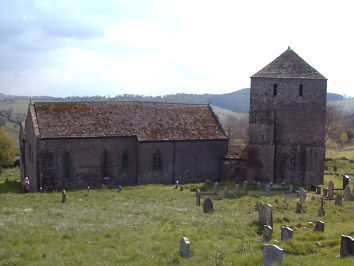 |
| The Local Time is Saturday, 27-Jul-2024 08:16:50 CEST |
Knights Templars |
|
|||
| YOU ARE HERE: Main Home Page > Strange Things > Knights Templars |
|
|
|
The history of the Knights Templars in and around the Cotswolds including the Lost Ark of the Covenant. THE ORIGINS AND AIMS OF THE KNIGHTS TEMPLARBetween the years of 1095 and 1099 a group of Knights led by Hugue De Paynes offered to serve as a protective force to pilgrims en route to Christian shrines in the Holy Land. At the outset the group consisted of just 9 members. They were granted quarters in the Royal Palace at Temple Mount (Jerusalem) and became known as the Templar’s. They remained as a group of nine for a number of years as they were unable to attract new members due to their austere lifestyle. However in the early 12th century Bernard of Clair Vaux a Cistercian monk wrote a rule of conduct for the Templar’s, it was based on the Cistercian Order rules and had a great effect on the recruiting of new members , he also wrote to Hugh de Payens praising the group of knights this had an immediate beneficial effect with many of noble birth joining the order and gifting land and property to them. As individuals the Templar’s were not permitted to have personal possessions but were permitted as a group to accept these. The land given to them was farmed and provided them with funds to finance their activities. They became one of the great medieval military forces but despite this they lost more battles than they won. They did however influence much of what happened in the Holy Land. After two centuries of its foundation Philip IV (known as Philip le Belle ) set out to destroy the Templar’s, he hounded and tortured to obtain false confessions and it is now accepted by Historians that Philip was motivated by greed to obtain their wealth. The Order of the Templars was suppressed in England in 1308. In 1312 the Templar’s movement was dissolved by Pope Clement V and on 18th March 1314 the last Grand Master of the Knights Templar Jacques de Molay was burned at the stake because he withdrew his earlier confessions of guilt. With reference to the Knights of St. John - following their expulsion from Jerusalem they took refuge in Malta, Cyprus and Rhodes. In Malta they turned the island into a giant fortress and remained there for 268 years the Knight eventually capitulating to Napoleons forces in 1798. The story of the Knights Hospitalliers of Jerusalem, Rhodes and Malta continues as the sovereign Military order of St John (cfr the St John's ambulance Brigade) whose latest grand master was English (Fra Andrew Bertie) and whose headquarters are in Rome (although the government of Malta has once again given them Fort St Angelo in Vittorosia Malta as a token fortress). Knights Templar locations can be found in many places within the British Isles. Most can be traced by name - these usually precede the place name with the word Temple but this does not always apply nor does it always prove that the Templars were associated with the village. Temple Balsall, Warwickshire
The Old Hall was Built in circa 1180 its external brickwork is of the 18th century, its original internal timbers have been confirmed as being original by experts. Temple Balsall lies hidden off the A4023. This historic hamlet by the meadows of the River Blythe contains the late 13th century church of St. Mary originally constructed by the Knights Hospitallers, and was later rescued from ruin by Lady Anne Holbourne, granddaughter of Robert Dudley, Earl of Leicester. Later still being restored by Sir George Gilbert Scott in the 19th century. The adjacent 12th century old hall, later extended, contains a timber framed aisled hall built circa 1185 by the Knights Templars. Temple Grafton, Warwickshire Despite its name Temple Grafton has no connection with the Templars. Temple Herdewyke WarwickshireA strong association with the Templars here, it has been claimed that there is a connection with the Ark of the Covenant. In his book ‘The Templar’s and the Ark of the Covenant ’ author Graham Phillips states that the Knights Templar from Herdewyke brought the ark to England following their defeat by the Saracens in the 12th century. Although the ark itself has not been found Graham Phillips believes that one of the two slabs of stone have been found. Inscribed with 13 separate symbols it has been identified as the form of sandstone found on Mount Sinai -where the commandments are said to have been made. The slab was found in the walls of an old Holy Well in the village of Napton -on -the Hill , Warwickshire. So strong is the connection with the templar’s is that in 1600 when Sir Walter Raleigh visited the village that he hired a gang of men to excavate the ruins of the Herdewyke chapel in the belief that the Templar’s had buried a treasure there, however nothing was found. The chapel in modern times was used as a barn, now it has been renovated as a domestic dwelling. All Saints Church, Burton Dasset(near Southam, Warwickshire, UK)
This well maintained church is situated on the hillside overlooking Burton Dasset It was once abandoned and came back into use as a Roman Catholic church , it was at the time of the reformation that it was taken over by the Church of England and became the parish church. In Victorian times plaster was removed from the internal walls uncovering ancient wall paintings on each side of the North Transept windows , these depict two human figures with crowns and have a number of faded inscriptions written in Latin. It is believed that the figures represent Archangels Michael and Gabriel, it is also believed that these figures appeared on the lid of the ark of the covenant. Temple Guiting, Gloucestershire Cotswolds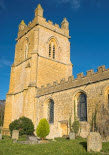
Church of St. Mary was owned by the Templar’s with their preceptory at Temple Guiting, has its origins in 13th Century with alterations in the Georgian period. An interesting decologue of wooden panels representing the ten commandments and a stone carving of a templar cross are to be seen. Temple Rockley, WiltshireGiven to the Knights Templar in 1155 by John Fitz Gilbert a wealthy landowner and husband of Sibyl the sister of the Earl of Salisbury. According to the Public Records office in 1308 it had a Refectory Chapel, Hall, Kitchen and Bakehouse. The locality was also known as Temple Bottom. Temple Cowley, OxfordshireIt was in 1239 that Sir Thomas de Sandford gave the land to the Knights Templar , Temple farm was acquired by Magdalen College Oxford in 1900. Bosbury, HerefordshireThis village had a property named Temple Court which was a preceptory of the Templar’s, evidence of their presence can be found in the church where two slabs can be seen that relate to the order. Garway, HerefordshireThe 13th century church of St Michael is now the only remains of the original preceptory and has the only visible circular Nave in England.
There are many masons marks on the stone work and these reflect a Middle Eastern influence. On the south wall of the chapel a swaztika is carved, this originally was a sign for good luck and prosperity . A green man decorates the original Templar chancel arch. |
|||||||||||||||||||||||||||||||||||||||||||||||||||||||||||||
|
|||||||||||||||||||||||||||||||||||||||||||||||||||||||||||||
History of the Knights Templars
|
|||||||||||||||||||||||||||||||||||||||||||||||||||||||||||||
| This page last modified Thursday, 11-Feb-2021 13:25:10 CET | |||||||||||||||||||||||||||||||||||||||||||||||||||||||||||||
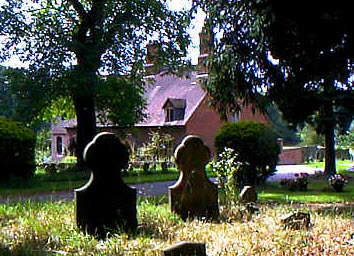 Situated near the centre of the old forest of Arden it was in 1162 that the manor of Balsall was given to the Knights Templar by Roger de Mowbray, the old hall is to be seen close to the church of St Mary.
Situated near the centre of the old forest of Arden it was in 1162 that the manor of Balsall was given to the Knights Templar by Roger de Mowbray, the old hall is to be seen close to the church of St Mary.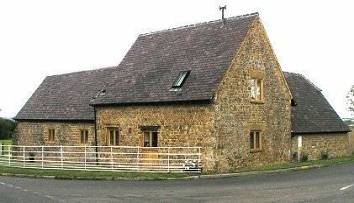 Many years have been spent searching for the Ark which contained two stone tablets with the ten commandments inscribed.
Many years have been spent searching for the Ark which contained two stone tablets with the ten commandments inscribed.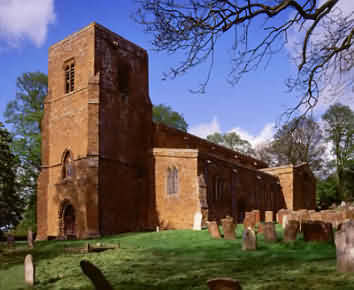 The Church was built by the Herdewyke Templar’s early in the 14th century, by this time the templar’s were purely a religious order.
The Church was built by the Herdewyke Templar’s early in the 14th century, by this time the templar’s were purely a religious order.